Birds avoiding your birdhouse can be frustrating. But the good news is you can typically fix this problem with just a few quick tweaks around your yard. There are many reasons things are not working out, so the key to getting the birds back ASAP is pinpointing exactly where you went wrong. Getting the size, shape, and location of the structure’s entrance correct is essential, as different species have different needs. If the shelter doesn’t match what they like, they won’t want to go inside. Another thing that matters is where you put it. Birds like to feel safe and protected, so if it’s in a place that’s open or noisy, or if it moves a lot in the wind, they might not feel comfortable and will go somewhere else.
Sometimes, birds might not choose your birdhouse because there’s too much competition. If there are a lot of others around or not enough resources, they’ll find somewhere else to live that’s less crowded. Understanding these things and making changes can make your birdhouse more attractive. This increases the chances of them choosing it as their home, so everybody wins. Here are the main issues to run through when troubleshooting.
The birdhouse is in a bad spot
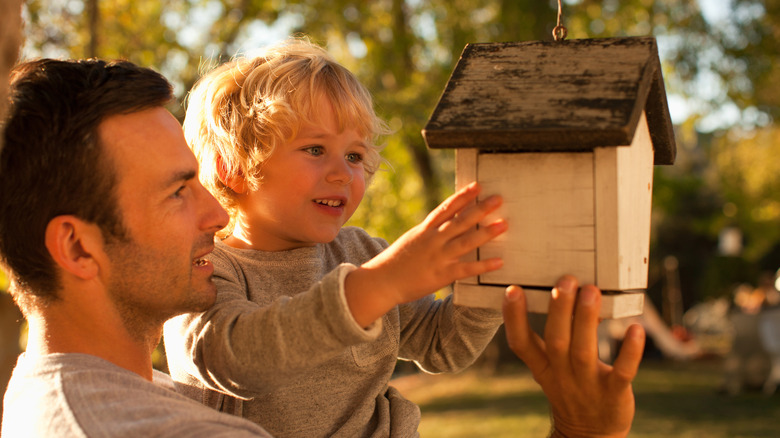
Your birdhouse’s placement makes a big difference in whether birds will want to live there. For example, if it’s too close to where people are always hanging out and making noise, they might feel uncomfortable and stay away. So placing it right near your back patio or next to your children’s playground set might not be the best fit. The same can be said if it’s near your dog’s outdoor kennel or if you have an outside cat. They will be scared away because they don’t want to become lunch. Urban birds like pigeons are less skittish around people, but if you would like to attract different species, you will run into a problem.
To make your birdhouse more appealing, try moving it to a quieter, safer spot in your yard. This could be a far corner, or under a nice bit of shade. If you create a peaceful and secure environment, you’ll make birds more likely to choose your shelters as the place to raise their chicks.
The hole is the wrong size
If you’re starting out your birdwatching journey, you might have bought a birdhouse thinking that it will attract all different kinds of species. But as it turns out, you need to narrow down what types of birds you want in your yard. That’s because the size of the hole in your birdhouse matters, so if it’s staying vacant, the entrance might be too small. Instead, the size should match the bird species you want to attract. If it’s the wrong size, they won’t be able to get in comfortably or at all. Birds are picky, so they won’t want to use a birdhouse that doesn’t meet their needs, especially when raising their babies.
Because of this, you need to narrow down which birds you want to attract and make sure your front door is compatible. For example, if you want a barn owl to nest, you need an entrance at least six inches across. Yet, for a sparrow, it only needs to be 1.5 inches. Birds are pretty smart and tend to choose nesting spots that have holes that only they can fit through, and not their predators. To choose the right size, take a look at the kinds of species that visit you most often and make adjustments accordingly.
Squirrels might have already moved in
LN team/Shutterstock
Squirrels love taking over birdhouses for themselves. They are also nesting creatures and love the idea of not having to build one for themselves. Unfortunately, their bigger size and territorial nature can scare off smaller species from nesting in the space place. This creates a tough competition for space inside, which the squirrels usually win.
Luckily, this problem is fixable, as there are things you can do to keep squirrels from getting inside. You can purchase a birdhouse with an overlong roof or adjust the one you have to be that much steeper. Squirrels usually jump from the tree down onto the roof and swing around inside that way. However, if the roof’s slant is steep, or the eaves hang over far enough that they can’t turn around and hop in, the problem is fixed. Or, if your birdhouse is on a pole, you can also install a squirrel baffle, which is a metal ring that goes around the pole at the bottom. The squirrel cannot climb up past it, making the home safer and cozier for birds to nest.
There might be a lack of nesting material available
stock1000/Shutterstock
For birds to build a nest, there needs to be plenty of good materials nearby. If the right things are not available, they might not set up shop in your yard’s birdhouse. They need things like twigs, grass, leaves, and even feathers, buttons, and shiny objects to build their nests. Looking around for nest materials can take a lot of time and energy. If they can’t easily find what they need around them, they might pick another place to nest that’s more convenient.
If you want to make your birdhouse more appealing, think about putting different nesting materials in your yard. However, be careful about the kinds of items you choose, as you don’t want to hurt the birds. For example, leaving out small piles of dead twigs, grass, or leaves from your last yard clean-up is a great idea, while things made of plastic, cellophane, or inorganic material like dryer lint won’t work. You can place these items in bird feeders, gaps in tree trunks, or small baskets around your yard to be found and used.
Your yard might be too noisy
africa_pink/Shutterstock
If there are a lot of sudden loud noises around your yard, it can make the environment unwelcoming for birds looking for a peaceful and safe place to build their nests. Birds are aware of what’s happening around them, so too much noise can make them feel like they’re in danger. The noise could come from things like busy traffic on a nearby road, construction out front, lawnmowers, dogs barking, or even small things like slamming the back gate a little too loudly.
These sudden, aggravating sounds can mess up their normal behaviors and make it hard for them to communicate with each other. Because of this, they might choose to find more peaceful places to build their nests. If you want birds to like your birdhouse, try to make your yard less noisy. You don’t have to tiptoe around, but by reducing the disturbances, you can create a safe atmosphere where they will want to live and raise their hatchlings. You can do this by adding more plants to absorb the sound, installing acoustic fencing (that does the same), mowing your grass less frequently, or even training your dog to be less vocal around wildlife.
The birdhouse might stink
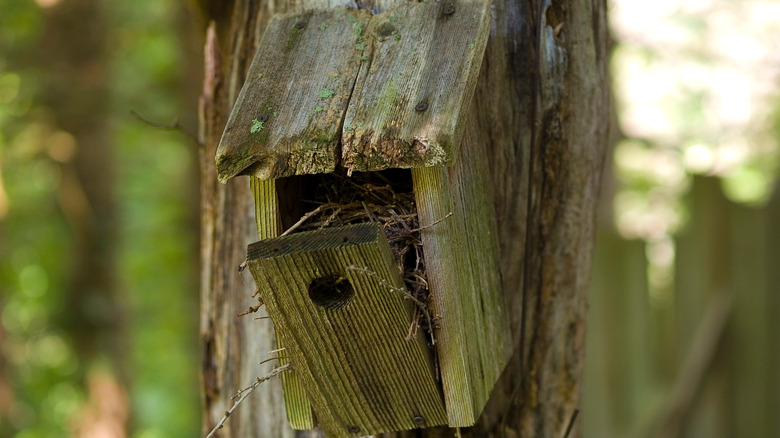
BufferedBrain/Shutterstock
Birds might be avoiding your birdhouse because of its smell. For years, scientists thought that birds could not smell and relied solely on sight and sound to hunt and nest. However, more recent research suggests that not only can some species smell, but they have a great sense of it, too. In the same way that vultures prefer meat that isn’t rancid if they have the choice, they might not want to make their homes in (or near!) something that stinks, or at least smells unfamiliar to them.
These smells could be the chemicals you used to build the structure, like chemical sealants, wood primer, or glue. It could also be rotting food inside the house or a garbage heap nearby. Some species, like Blue Tits, can smell if their arch nemesis, the weasel, has been anywhere near something and won’t touch it if so. To keep things neutral, give the birdhouse a whiff. Does it smell like anything to you? Even if it doesn’t, try wiping it down with a wet cloth and some gentle dish soap as a last resort. The birds could be picking up on something that you aren’t.
It could be too bright (or too dark!)
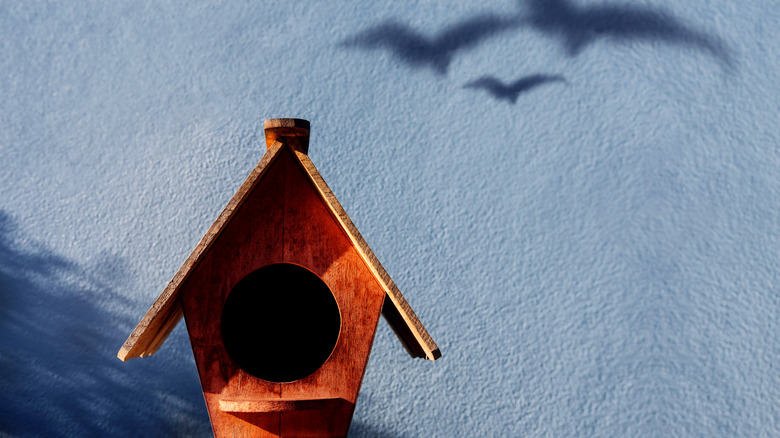
Black Salmon/Shutterstock
Some birds prefer their nesting sites to be in sunny or shaded areas, depending on the species. This comes from whether they typically live in open, bright spaces, like meadows, or darker spaces, like dense forests. If your birdhouse lets too little (or too much!) light for the kinds of birds that live nearby, they won’t choose to live there. For example, barn swallows’ natural habitat is on open land, and they love building their nests on houses, barns, and any other man-made nook. So a bright birdhouse won’t bother them. But phoebes who build their nests in dim, wooded areas will need lots of shade to be tempted.
To make your birdhouse more attractive to different species, think about the lighting in your yard. Set up the shelters in various places to cater to different preferences. A few could be more open in the sunny spots, while you can set up enclosed ones in the shady bits of your yard. You might even consider an aviary to put birdhouses inside for an extra layer of protection.
There might not be enough food nearby
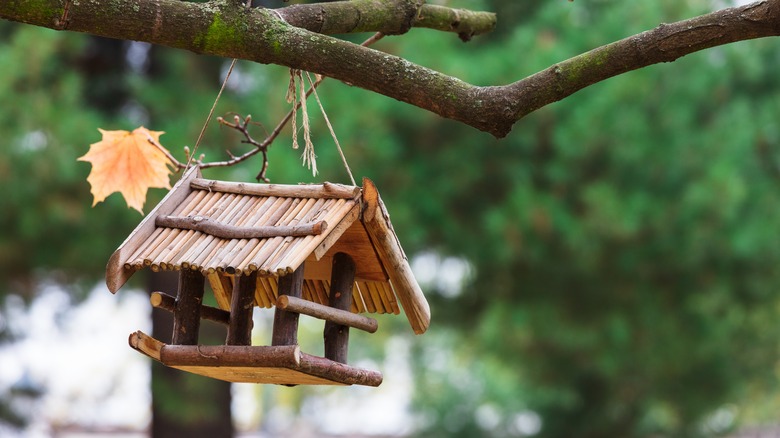
terekhov igor/Shutterstock
Birds are picky about where they nest as they want to easily find enough food for their chicks. If they can’t find enough food nearby, they won’t want to make a nest in the birdhouses you have out. They eat a lot of different kinds of food, so fixing the solution to this problem depends on the species you want to attract.
The easiest fix is to set up different types of feeders in your yard. You can purchase wild bird seed from most big box stores that will appeal to many different species. Other options to make your yard overall more bird-friendly are putting out bird baths for relaxation and planting more greenery to create a lush yard rife with insects for eating. By ensuring there is always enough food available, you can make your yard a great place for birds to raise their families.
You haven’t cleaned the birdhouse in a while
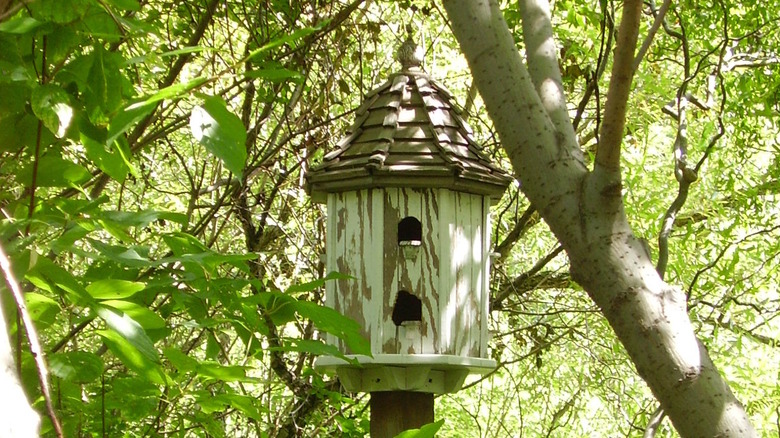
Laura Stone/Shutterstock
If you have not cleaned the birdhouse out in a while, birds will stay away from it. This is especially true if last year’s nest is still in there. They like to nest in clean and safe places, where bugs and grime haven’t built up over time. Only certain birds will use pre-built nests, while most prefer to build theirs fresh. An old nest can be full of insects like mites and fleas, which can harm both adult birds and their chicks.
Plus, a rundown house might not give them the stability and protection they want in a home. If it’s banged up and falling apart, it could let in chilly drafts, rain, or predators. That doesn’t make it appealing. To make the birdhouse more attractive, give it a good scrub with gentle dish soap and warm water at least once a year. Take out the old, broken nest from last year and clear out any spiderwebs and other debris. The best time to do this is before breeding season starts, which is usually early in spring. This way, they will have a clean place to call home, and they’ll be more likely to choose it as their favorite nesting spot.
There might be too many predators
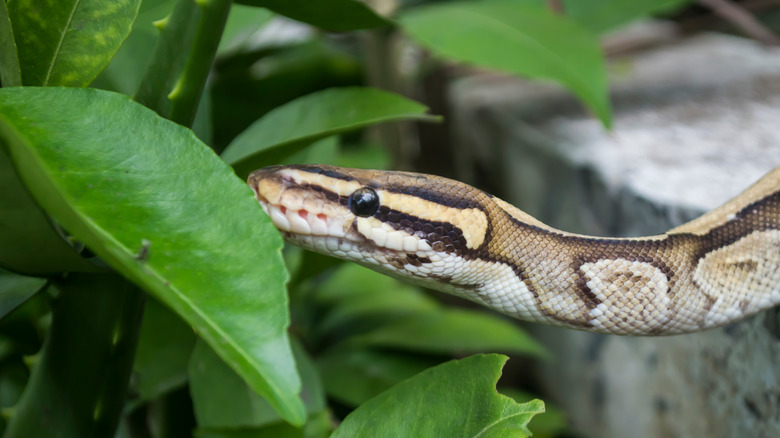
Pepi M Firmansyah/Shutterstock
The presence of potential predators near your birdhouse can be a significant deterrent for birds who might be considering nesting there. While there may not be squirrels living inside, other predators like cats, snakes, and small rodents could still pose a threat. Birds are highly attuned to their surroundings and are naturally cautious when selecting a nesting site to make sure their hatchlings are safe. The mere presence of these predators, even if they’re just lurking nearby, can create a stressful and dangerous environment.
To make your birdhouse more appealing, set it up in a location that is as predator-resistant as possible. The easiest thing might be to keep pet cats inside during spring when birds are setting up their nests. If you live in an area with foxes or snakes, you can take steps to keep them away, like keeping the lawn trimmed so snakes have nowhere to hide and using snake-proof fencing with fine mesh. You can also secure trash cans to prevent scavenging animals from entering the yard and bring pet food inside at night.
It might be too hot inside
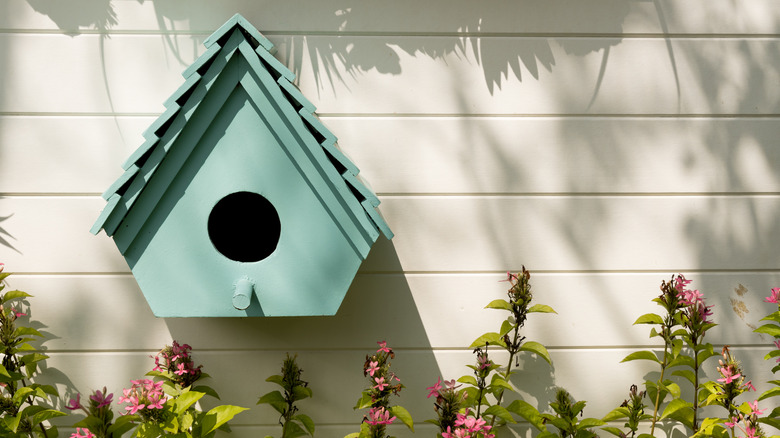
Fotolism_thai/Getty Images
One big thing to think about is how the inside of the birdhouse might feel. A problem that could keep birds away is when there isn’t enough airflow, and it gets sweltering and humid inside. They are really sensitive to temperature, so if the inside of the birdhouse gets too uncomfortable, they won’t want to make a nest there. So, to make it more attractive, you should make sure it has good ventilation.
You can do that by adding little holes or spaces for air to come in without letting anything harm the birds or the nest. Most store-bought structures should come with lots of ventilation holes, but if you built the house yourself, be sure to add them. If you are worried that they are too big, you can cover them with metal mesh. This way, enough air can get in, but the birds can stuff it with twigs and fluff should they need to.
The birdhouse is at the wrong height
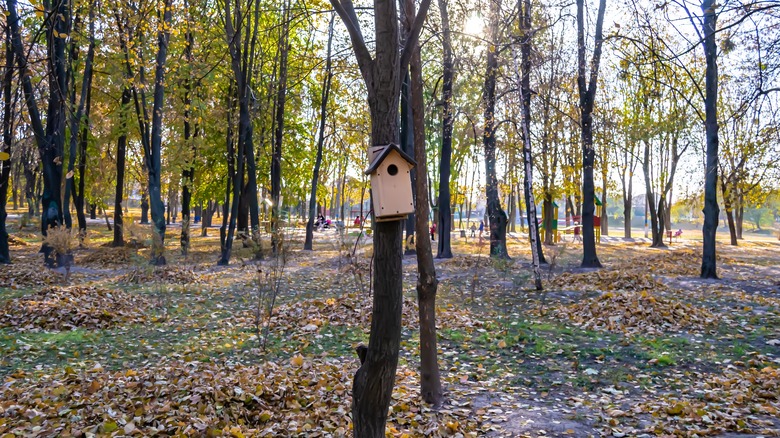
OLEG525/Shutterstock
The height of your birdhouse can impact whether birds choose to use it. Each species has preferences when it comes to how high they like their nests to be. If you hang it at the wrong height for the local birds, they might not think it’s good for nesting and just ignore it.
Some like nests that are off the ground, while others like to nest on the ground or in lower branches. For example, screech owls like houses that are 10 to 30 feet high, while bluebirds can make do with things lower, at four to six feet. The key is to have the birdhouse high enough that it isn’t exposed to predators, but low enough that you can perform maintenance on it every once in a while. If the birds are not nesting, try moving each of your houses up by a few feet and see if you have more luck.
Your birdhouse doesn’t suit the endemic species
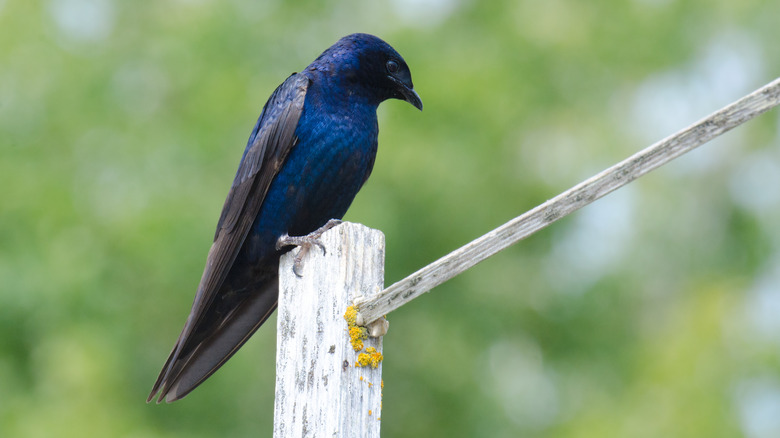
Birdiegal/Shutterstock
Every species has preferences when nesting, so a one-size-fits-all approach might not work for the birds in your area. They all like different types of shelters, entrance hole sizes, and materials to build their nests. Ducks, for example, need nest boxes close to water, while owls like tree holes or special owl boxes. Some animals, like purple martins, like nests that function as community homes, with lots of slots for lots of different martins to set up shop.
To make your yard more attractive, pick birdhouses that match the needs of the local species. You should research the kinds of habitats and nests the birds in your area like and tailor your setup to reflect their natural habitats. Pick shelters that have the correct dimensions and entry holes for what you want to attract. If you offer a variety of options that fit the needs of different species, you’ll create an inviting environment for the local birds.


